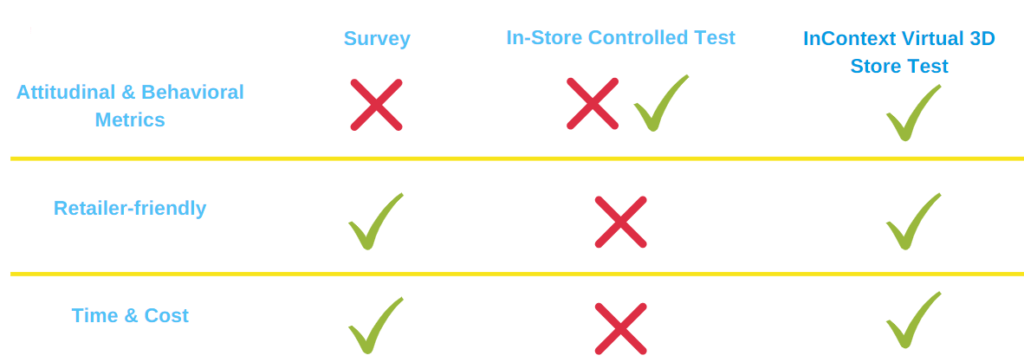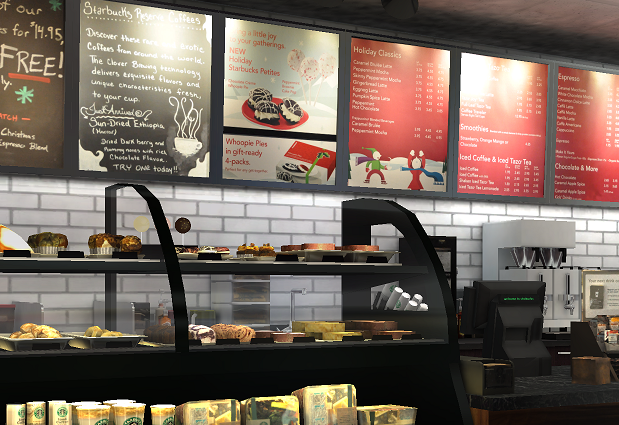There are a lot of ways to go about getting a read on new in-store ideas. Whether it’s launching a new product to market, creating seasonal displays, or designing a more seamless aisle flow, having a strategy in place to test those ideas with shoppers should be high on the list of priorities.
For example, let’s say you are a category manager, and you’re tasked with learning whether adding a new product to a shelf (thus creating less room for other SKUs) would help or hurt overall sales. You have a hunch, but you—smartly—want to test a few options before providing a recommendation. The problem is you’re crunched for time. You could conduct an attitudinal survey, or maybe field an in-store controlled test. What’s the best option?
Neither, actually. Virtual 3D simulations provide the fastest, most accurate feedback on shopper behavior and attitudes when faced with a shopping exercise, and here’s why:

Attitudinal & Behavioral MetricsSurveys are attitudinal only. While quick and relatively inexpensive, simply asking respondents what they would do in a given shopping situation isn’t going to be very accurate. In-store controlled tests are able to observe behavior, but more difficult to gain attitudinal feedback. Testing with virtual shopping simulations allows for both–we can watch what shoppers do in a realistic store space, while also getting their feedback in real time.
Retailer ApprovalIn-store tests require approval from the retailer before setting up and fielding, and this can be difficult to obtain based on the retailer, the time of year, the location, etc. On the other hand, InContext provides virtual store environments from 80% of global retail banners–no approval necessary.
Time and CostWhile surveys are fast and less expensive, they are not strongly related to in-market results. In-store controlled studies vary with each test and can be time and cost prohibitive. Virtual is fast, less expensive and accurate – and correlates .90 with real world market shares.
In our guide to Best Practices in Virtual Research, we compare additional methods, and lay out why virtual allows shopper researchers a one-stop-shop when getting a read on winning in-store concepts.




